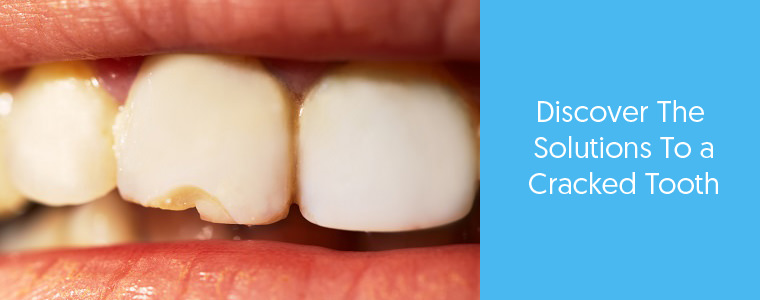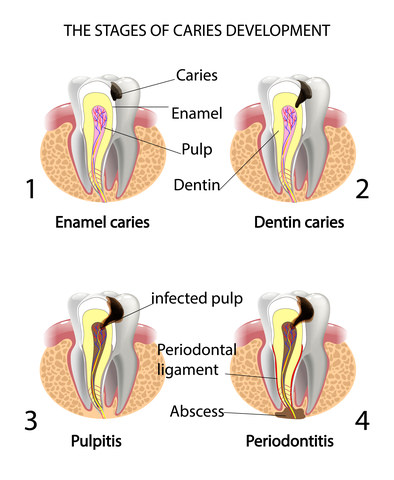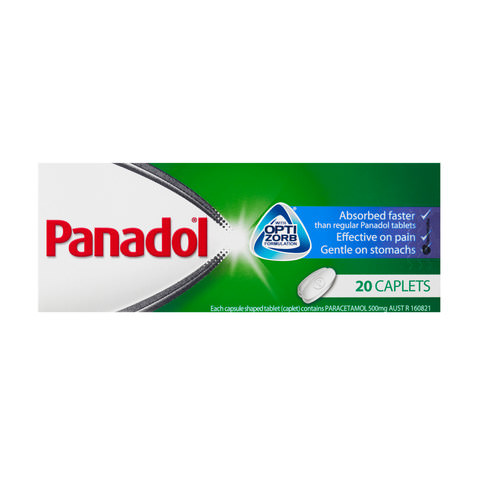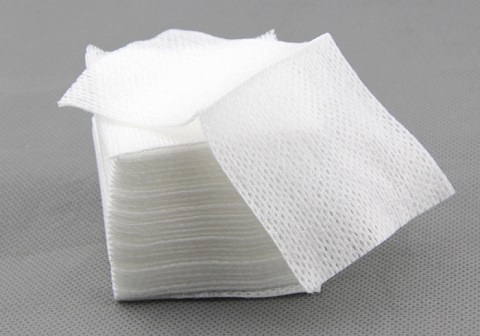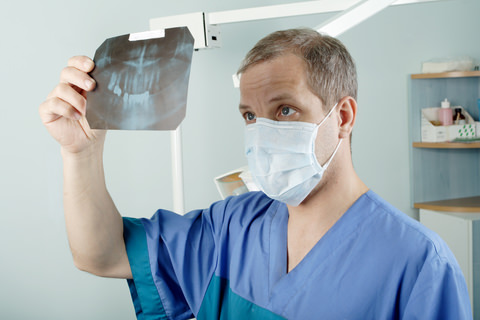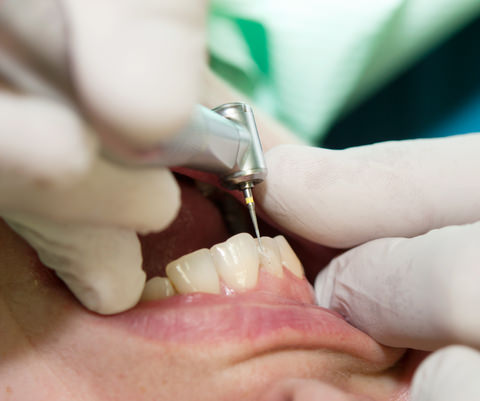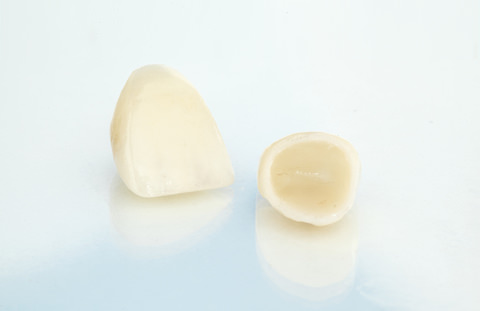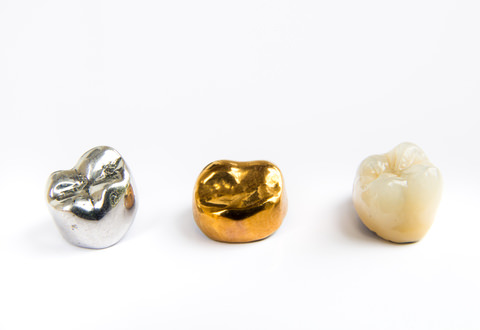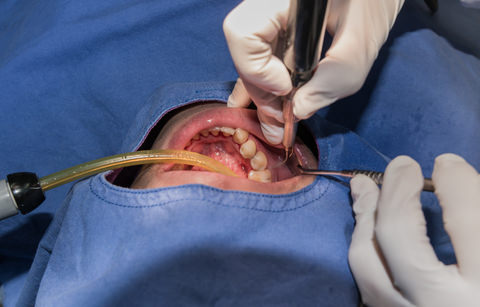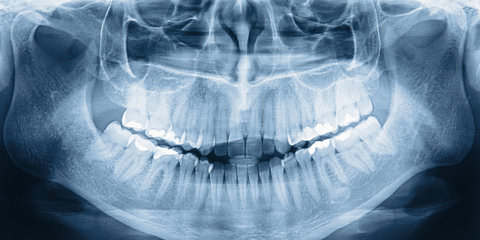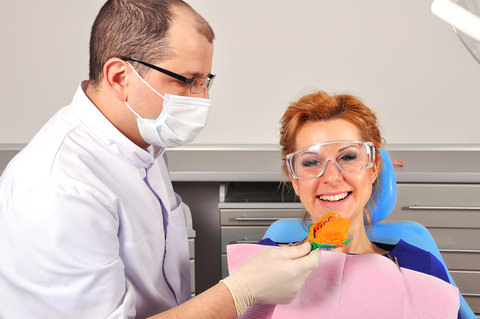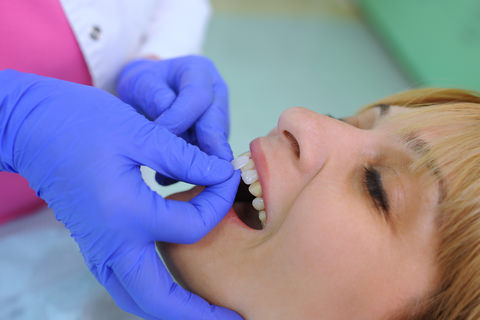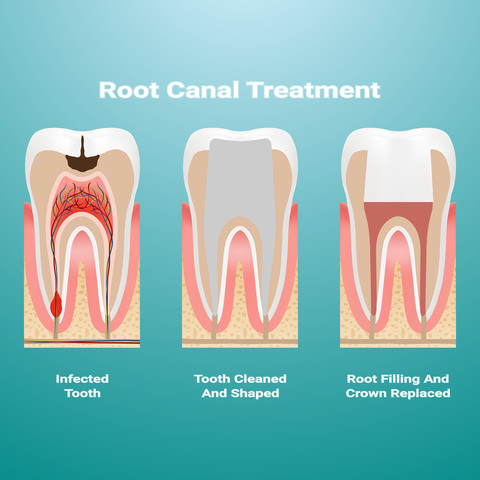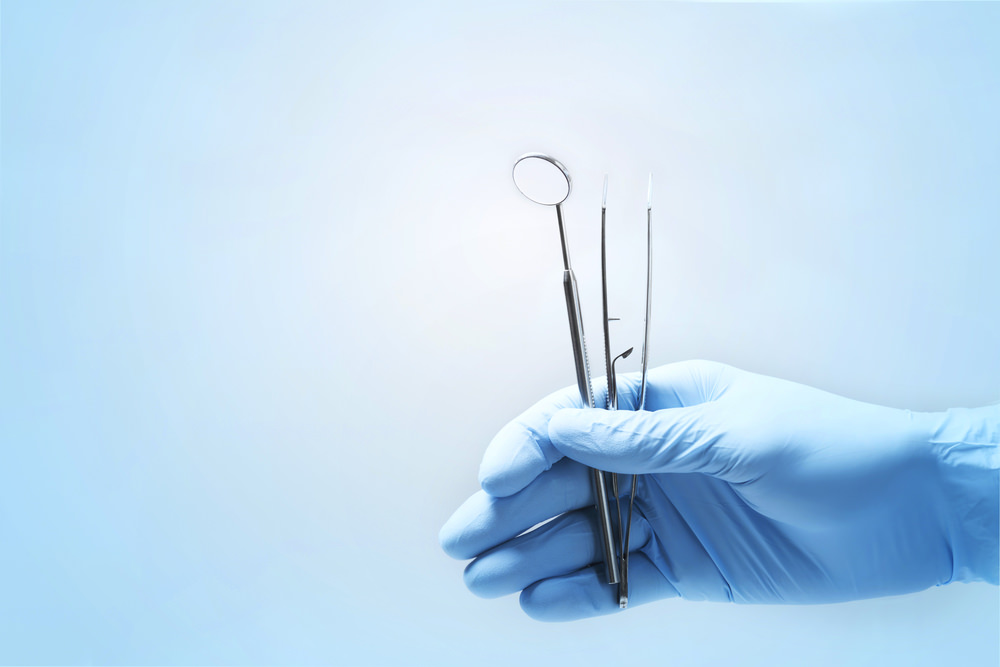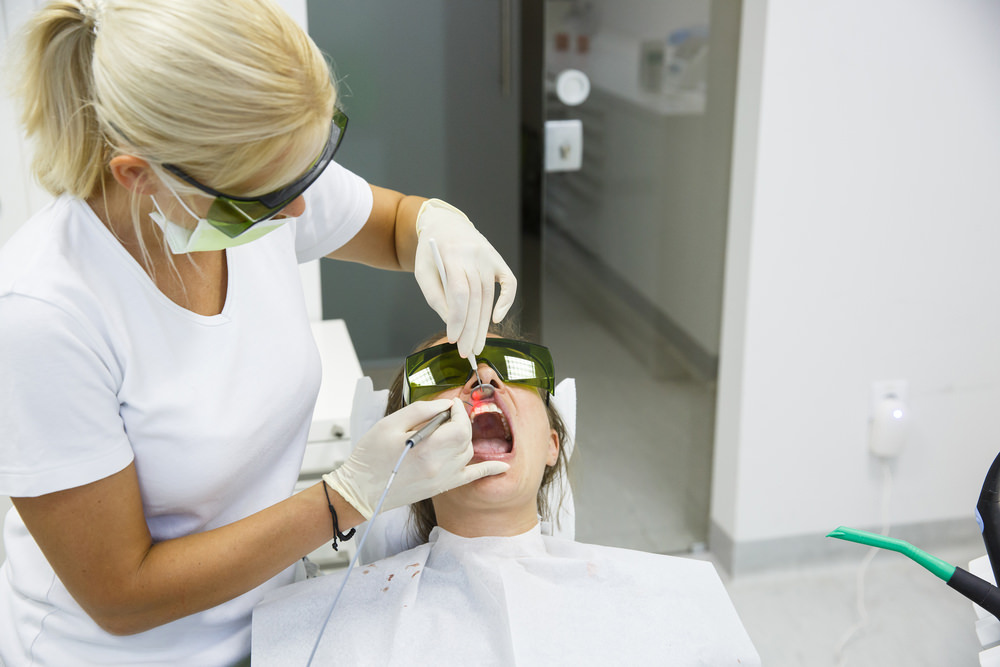Options When You Have a Chipped Tooth
A chipped tooth can happen fairly easily and it’s hard not to notice the unfortunate chip or crack once it occurs.
All it takes for a tooth to chip is biting down hard on a nut or a piece of cutlery (in my case).
A chipped tooth is a common occurrence but if left unchecked, a chipped tooth can lead to dental conditions which can be very painful or dangerous.
For this reason, it’s essential to get your chipped tooth fixed by your friendly dentist as soon as it happens.
Let me answer some of the common questions out there that surround chipped teeth below…
Jump to Contents
What is a Chipped Tooth?
When a tooth is under extreme pressure, such as receiving a strong blow to the face, it can ‘chip’ or have a part of it broken off.
Although a protective layer of enamel covers each tooth, the hardest and highly mineralised portion of your body, it can only hold off so much.
One of the main reasons why a tooth will easily chip away is because a cavity or some form of tooth decay impacts the tooth already.
While any teeth weakened by a cavity or other factors is at risk, one study shows that the second lower molar faces the highest risk of being chipped away.
Second lower molar faces considerable pressure, being the main component when you chew.
Teeth with fillings come second in the list of being more prone to chipping. However, that does not mean that other teeth are immune to chipping – they don’t chip that easy.
How do You Know if You Have a Chipped Tooth?
Most of the time, a chipped tooth is instantly recognisable.
Not only do you get the feeling of something breaking off but you can feel the broken part in your mouth. However, this might not always be the case.
Sometimes when you bite down hard, you end up swallowing the chipped tooth with the food.
This happens particularly when the chip is minor and is not at the front of your mouth and visible.
A chipped tooth from the set of teeth located at the back of the mouth can go easily unnoticed.
Here are some symptoms that may help you identify a chipped tooth:
- Irritation of the gum surrounding the area of the chipped tooth.
- Irritation of the tongue over the tooth’s rough and uneven edge.
- Pain when biting down with the chipped tooth.
- Rolling your tongue over your teeth and feeling a jagged and sharp poke when you move over the chipped.
While these tips are effective in ascertaining whether you have a chipped tooth or not, it is important to know that these methods are not certain.
It is important to visit your dental hygiene professional or dentist when in doubt about a chipped tooth.
Qualified professionals make a more accurate diagnosis of such a situation, as they are also equipped with the instruments to do so.
How to Take Care of a Chipped Tooth Initially?
A chipped tooth may cause intense pain, blood loss, and possible nerve damage among other things.
Therefore, it is important to take care of the chipped tooth and the mouth as a whole.
Having it checked by the dentist should remain your top most priority, but there might be cases where it is not possible to get it checked instantly (late in the night for example).
Here are a few ways you can treat your chipped tooth initially until you can see the dentist:
Use Medicines
If your tooth is painful and it hurts enough to impact your daily functions, you may take an over-the-counter pain reliever.
Dentists’ will likely advise taking something mild like Panadol or Nurofen.
It is wise to keep a check on your condition and if the pain does persist, see your doctor or dentist ASAP.
Wax
Chipped teeth often have a jagged, rough surface which is sharp enough to cause a cut.
Due to constant contact, a sharp edge from a chipped tooth can cause a cut in the tongue, lip or cheek.
To ensure that does not happen, you can apply a piece of paraffin wax to the affected tooth.
Eat Gently
In case you have a chipped tooth, it is advised to abstain from foods that require heavy munching or chewing.
The chipped tooth is prone to more pain and can break under pressure; therefore it is best to avoid applying such pressure to the tooth.
Eat soft foods as well as avoid biting down on the chipped tooth.
Dental Cement
Dental cement is easily available in chemist stores and is a temporary solution for covering up a chipped tooth.
It is very useful in case your dental appointment is scheduled for more than 24 hours.
Dentafix is a product that can be used in these circumstances but always follow the instructions and try to get to your friendly dentist as soon as possible.
This product can be used if you already have a crown, bridge or inlays which has been chipped or come loose for some reason.
Options When You Have a Chipped Tooth
There are various types of chipped teeth; some more damaging than others, and every case requires a different treatment.
Due to the advancements in medical technology, dentists now have various choices as opposed to the one-fits-all approach used in the past.
You should be aware of the various choices presented while fixing a chipped tooth.
Here are some of the ways a dentist might repair or treat your chipped tooth.
Fillings
Dental Filling is used in cases when the chipped off part only consists of a small piece of tooth enamel.
A filling is a special compound which is applied to the chipped part of the tooth and scaled to match the shape of the tooth.
Dental Bonding
Dental Bonding is used primarily in cases when the chipped teeth are visible.
When a tooth belonging to the front set of teeth breaks, it is prominent when you smile and affects people’s behaviour. In such cases, dentists’ use bonding.
Bonding, unlike other treatments, does not require the tooth to be numbed down.
During the bonding process, the tooth is first roughened by placing a liquid or gel on its surface.
This is done to ensure the bonding material gels in with the tooth.
Then, the dentist gently applies an adhesive material to the tooth. Next, a composite resin is attached to the adhesive.
The composite resin is selected to match the teeth colour and texture.
After shaping and roughening the bonding material, the dentist uses an ultraviolet light which hardens the material.
Crowns
Dental Crown, also termed as the Dental Cap, is used in case of severely chipped teeth or other problems.
The primary purpose of a dental crown is to protect the tooth, add to its appearance and retain strength.
If the chip comprises a large portion of the tooth or if the chipped tooth is already facing significant decay due to cavities, the dentist might opt to remove the affected part and replace it.
The materials used to make the crown vary according to needs.
Metal crowns are the strongest and offer the greatest protection. Porcelain and composite resin crowns might look nearly identical to a real tooth.
Other types of dental crowns include ceramic dental crowns and new materials like Zirconia or Emax. These are almost perfect as they’re designed and made by computers.
More Details on Chipped Teeth
If the entire top of the tooth is broken off, but the root remains intact, your dentist may choose to perform a root canal therapy and they may even refer the case to an endodontist.
An endodontist is a dentist who specialises in performing root canal therapy.
The dentist or endodontist may perform the surgery, by placing a pin or post in the canal; this will build up enough structure so a crown can be placed on top.
A crown installation usually takes two appointments with your dentist.
The first visit is composed of X-rays of the jaw to check if the surrounding teeth roots and the supporting bone are intact.
In case the damage is minimal, the dentist numbs the chipped tooth and gum to make room for the crown.
Should you have a large chip, dentists sometimes will use a filling to hold the crown.
Because crowns are usually made in dental labs, during your first visit, the dentists are likely to use a material that is similar to putty.
An impression of the chipped tooth as well as the tooth facing opposite – the one it touches when you bite down.
In the meanwhile, some dentists might offer you a temporary acrylic crown.
As soon as the dentist receives the crown from the lab, you will be called in for a fitting for the permanent crown.
The waiting period usually measures 2 to 3 weeks. However, some dental offices have made fixing teeth crowns fairly easier.
They use a special digital milling technology that enables them to make a crown the same day, without the putty impression.
Dental Veneers
Dental veneers are a good substitute for using when the front tooth gets chipped.
A dental veneer is a thin shell of tooth-coloured porcelain or resin composite material that covers the entire front part of the broken tooth.
Much like dental crowns, the dentist will remove some of the tooth enamel of the broken tooth to make space for the veneer – approximately about 0.3-1.2 millimetres.
Next, an impression of the tooth is taken to send to a laboratory which will make the dental veneer for you.
The veneer will be fitted upon delivery, which usually takes a few weeks.
To place the veneer, the dentist will put a liquid or gel on the surface of the tooth and roughen it. The dentist then applies dental cement and etches the veneer with it.
Once the veneer is in position, the dentist makes use of a special light that activates chemicals that harden the cement quickly.
Root Canal Therapy
Root canal therapy is usually last resort surgery for fixing a severely chipped or cracked tooth. It’s used only in cases where the chip is large enough to expose the pulp.
The pulp is referred to as the centre of your tooth which contains the nerves and blood vessels.
An exposed the pulp paves the way for bacteria to enter and infect your vital organs and veins.
Symptoms of an exposed pulp include severe pain, heightened sensitivity to heat and a change in tooth colour.
Pulp tissue can be damaged and dies if not treated and teeth can also become infected and need to be extracted.
Root canal therapy involves removing the dead tooth pulp, then cleaning out the root canal and sealing it shut to prevent infection.
A root canal surgery is best carried out under the supervision of a specialist – an endodontist. This maximises its effectiveness while simultaneously reducing any chance of painful surgery.
Conclusion
A chipped tooth is a common dental injury, which can be caused by various reasons.
While most of the cases are minor and only require a single visit to the dentist, some cases might be severe.
It is best advised not to take a chipped tooth lightly and visit your dentist as soon as you feel the chip or any symptoms that come with it.
Advancements in technology have led to many options being available to fix a chipped tooth.
Going to the dentist at the first sign of trouble can prevent a lot of pain, and help you recover sooner.
By Dr. V
Created at September 21, 2018, Updated at January 25, 2025


